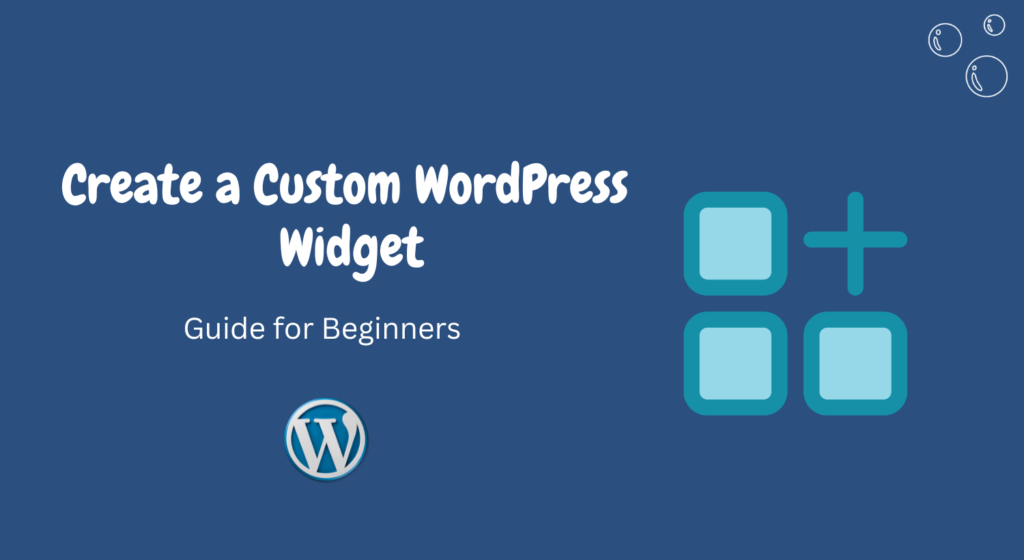Are you looking to enhance the functionality of your WordPress website by adding a custom widget?
Widgets are an excellent way to add dynamic and interactive elements to your website’s sidebar, footer, or any other widget-ready area.
In this article, we will guide you through the process of creating a custom WordPress widget step by step.
Whether you’re a seasoned developer or a beginner, this tutorial will provide you with all the information you need to create your own unique widget.
Table of Contents
- Introduction
- Understanding WordPress Widgets
- Planning Your Custom Widget
- Creating the Widget Structure
- Adding Functionality to the Widget
- Styling the Widget
- Testing and Implementing the Widget
- Conclusion
- FAQs
1. Introduction
WordPress widgets are self-contained modules that allow you to add various features and functionality to your website without modifying the theme’s code.
By creating a custom widget, you can tailor it to meet your specific needs and add custom functionality that goes beyond the default widgets provided by WordPress.
2. Understanding WordPress Widgets
Before diving into creating a custom widget, it’s essential to have a clear understanding of how WordPress widgets work.
Widgets are essentially small content blocks that can be easily dragged and dropped into widget areas.
They provide a simple way to customize the layout and functionality of your website without writing complex code.
3. Planning Your Custom Widget
To create an effective custom widget, it’s crucial to plan and define its purpose and functionality.
Consider what type of content or functionality you want to display and how it will benefit your website visitors.
Outline the specific features and design elements you want to incorporate into your widget.
4. Creating the Widget Structure
To create a custom WordPress widget, you’ll need to create a new PHP file that will serve as the widget’s template.
Begin by defining the widget’s class, extending the built-in WordPress WP_Widget class.
Within the class, define the widget’s constructor, which will handle the initialization of the widget.
5. Adding Functionality to the Widget
Once you have set up the basic structure of your custom widget, it’s time to add the desired functionality.
This may involve retrieving and displaying specific data, integrating with external APIs, or implementing custom behavior.
Use WordPress hooks and functions to interact with the WordPress core and retrieve the necessary data for your widget.
6. Styling the Widget
To ensure your custom widget blends seamlessly with your website’s design, it’s essential to style it accordingly.
You can either modify your theme’s CSS file or create a separate CSS file dedicated to the widget’s styling.
Add appropriate classes and selectors to target your widget’s elements and apply the desired styles.
7. Testing and Implementing the Widget
Before deploying your custom widget to your live website, it’s crucial to test it thoroughly to ensure its functionality and compatibility.
Create a test environment, preferably a staging site, where you can evaluate the widget’s behavior and make any necessary adjustments.
Once you’re satisfied with the results, implement the widget on your live website.
8. Conclusion
Creating a custom WordPress widget allows you to extend the functionality of your website and provide a unique experience for your visitors.
By following the steps outlined in this article, you can create a custom widget that aligns with your website’s goals and enhances its overall appeal and usability.
FAQs
Q1: Can I create multiple custom widgets for my WordPress site?
Yes, you can create multiple custom widgets for your WordPress site. Each widget should have its own unique class and file, allowing you to create as many custom widgets as you need.
Q2: Do I need coding experience to create a custom WordPress widget?
While having coding experience is beneficial, it’s not a strict requirement. With a basic understanding of PHP and WordPress hooks, you can follow tutorials and examples to create your own custom widget.
Q3: Can I modify the appearance of my custom widget?
Absolutely! You have full control over the appearance of your custom widget. By styling it using CSS, you can customize its design to match your website’s branding and aesthetics.
Q4: Are there any limitations to what a custom WordPress widget can do?
The functionality of a custom WordPress widget is only limited by your coding skills and the available WordPress hooks and functions. With the right knowledge, you can create highly versatile and powerful widgets.
Q5: Can I share my custom widget with others?
Yes, you can share your custom widget with others. Consider packaging it as a plugin or distributing the widget’s code to allow others to benefit from your creation.
In conclusion, creating a custom WordPress widget can greatly enhance your website’s functionality and provide a personalized touch.
By following the steps outlined in this article, you can create your own unique widget that caters to your specific needs.
Experiment, explore, and unleash the full potential of WordPress widgets to create an engaging and dynamic website.


